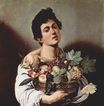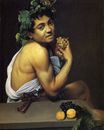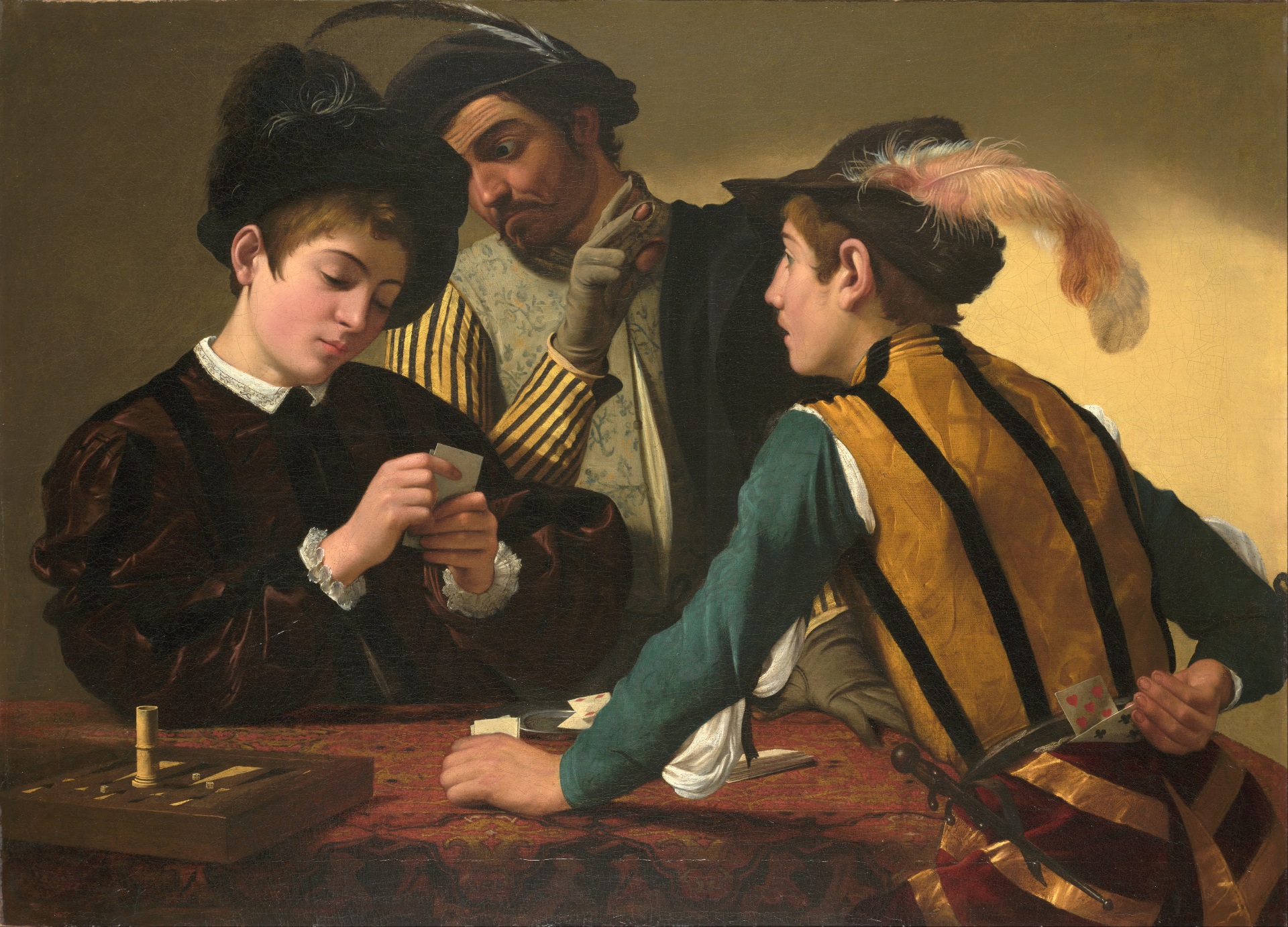Caravaggio - Cardsharps 1594
 |
 |
 |
 |
 |
 |
 |

Cardsharps 1594
94x130cm oil/canvas
Kimbell Art Museum, Fort Worth, Texas, US
The image is only being used for informational and educational purposes
<< Previous G a l l e r y Next >>
From Kimbell Art Museum, Fort Worth:
Caravaggio was one of the pivotal figures in the history of Western art. In his short lifetime, he created a theatrical style that was as shocking to some as it was new, inspiring others to probe their subject matter for the drama of psychological relationships. Apprenticed in Milan, Caravaggio came to Rome in the early 1590s. There his early masterpiece The Cardsharps came to the attention of the influential Cardinal Francesco Maria del Monte, who not only purchased it but also offered the artist quarters in his palace. Caravaggio was thus introduced to the elite stratum of Roman ecclesiastical society, which soon gave him his first significant opportunity to work on a large scale and for a public forum. In The Cardsharps, the players are engaged in a game of primero, a forerunner of poker. Engrossed in his cards at left is the dupe, unaware that the older cardsharp signals his accomplice with a raised, gloved hand (the fingertips exposed, better to feel marked cards). At right, the young cheat looks expectantly toward the boy and reaches behind his back to pull a hidden card from his breeches. Caravaggio has treated this subject not as a caricature of vice but in a novelistic way, in which the interaction of gesture and glance evokes the drama of deception and lost innocence in the most human of terms.